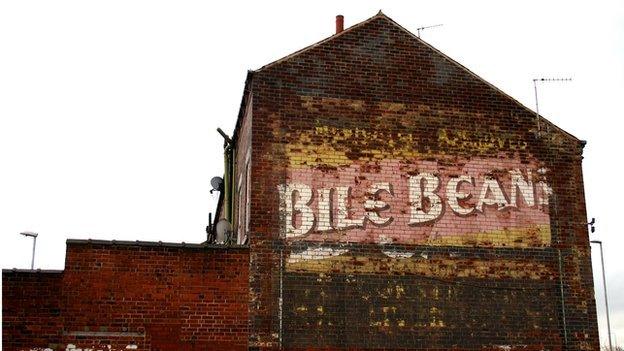In pictures: A time capsule of Leeds' lost buildings
- Published
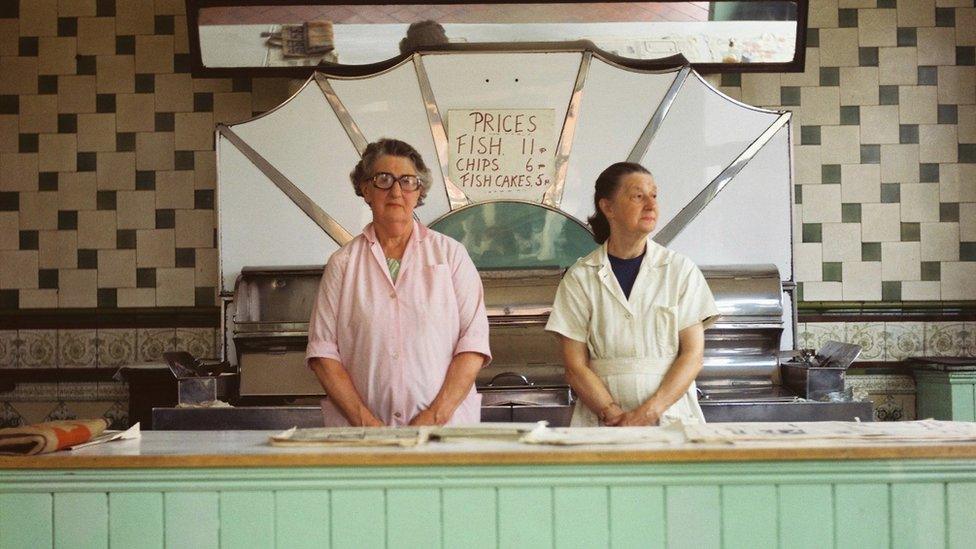
Peter Mitchell wanted to capture a side of Leeds that would soon be lost
Breweries, racing pigeon shops, fisheries and chippies once littered the landscape of Leeds. Photographer Peter Mitchell went about photographing these "goners" before the bulldozers removed every trace of them.
Peter was working as a lorry driver when he decided to document the city's deteriorating shop fronts and businesses before they disappeared altogether.
A 29-year-old art college graduate, he had an eye for a shot and armed with his medium-format camera and a stepladder, he looked to the sky above and the ground below to frame the picture.
During his shifts, he hunted for haunts on the verge of collapse and would revisit them on his days off to capture them on film.
But it was 1972 - he didn't earn much and couldn't afford to get all of the rolls developed.

Peter would drive around searching for deteriorating shop fronts, like this one on Compton Street
"Film wasn't, and still isn't, a cheap process and I was doing it all off my own back," said Peter, who moved from Manchester to London, then Chapeltown.
"Leeds was such a strange world when I moved, the buildings always looked so vulnerable. People would ask me why I didn't shoot beautiful buildings, but it just felt right at the time."
The few rolls he did develop he intended to screen-print on to silk scarves, but Leeds Art Gallery took an interest in the images and gave him his first photography exhibition in 1975.
It led to a job at the gallery and his hobby becoming a career, but he continued taking pictures throughout the 1980s and 1990s of the buildings whose days were numbered.
"I used to hear, 'if Mitchell photographs them, they're goners'," said Peter. "But they weren't taken for nostalgic reasons, I enjoyed it from an architectural perspective.
"They're cheerful things really - the houses maybe all look like piles of bricks but [taking the pictures means] the memories continue."
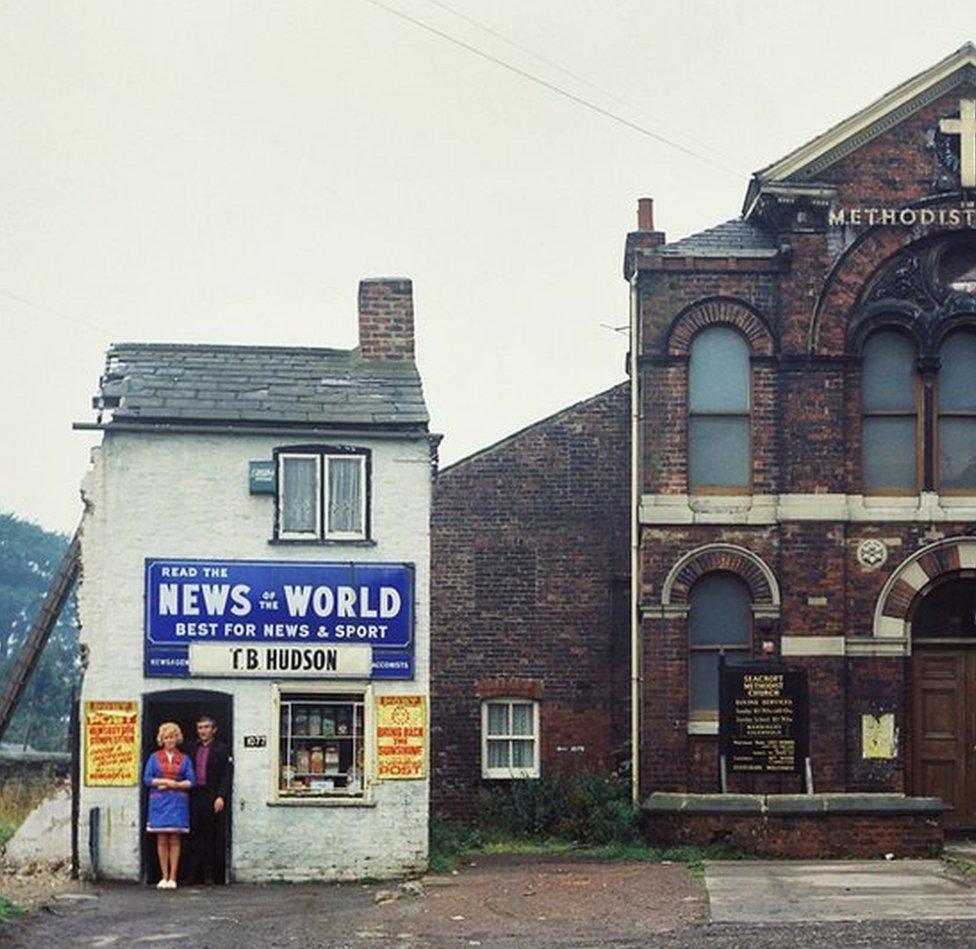
The buildings Peter used to shoot were known as "goners" - this one in Seacroft was already halfway there in 1974

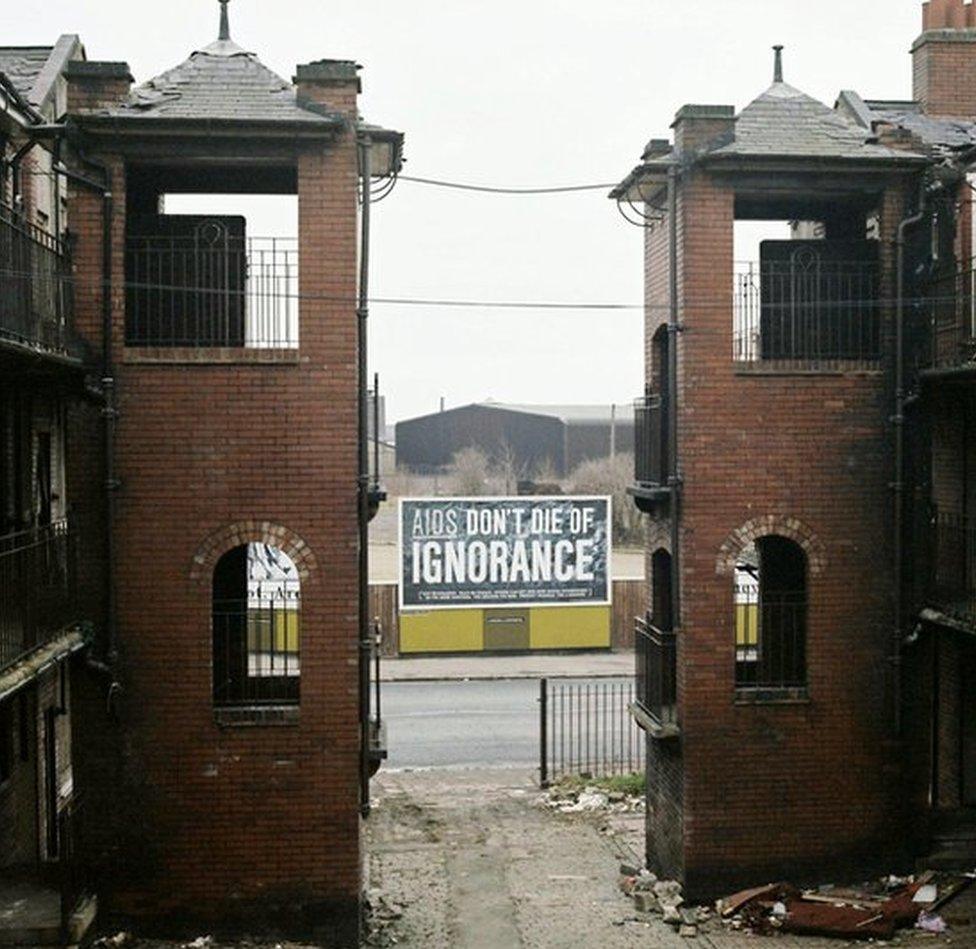
A billboard is framed by the half-demolished Marsh Lane tenements

Last year, Peter began looking through the negatives stored in trunks in his home - some of which had been untouched for almost 50 years.
He is putting together a new exhibition and currently has 500 shots to choose from of buildings he hasn't seen since he looked through the lens.
One picture shows the Racing Pigeon Shop in Blake Grove, taken in the 1990s, which the BBC showed it to its former owner, John Murray.
"What happened there was that I was upstairs and my colleagues said to me, 'there's this chap who wants to take pictures'.
"They said, 'come down and get in the photograph."
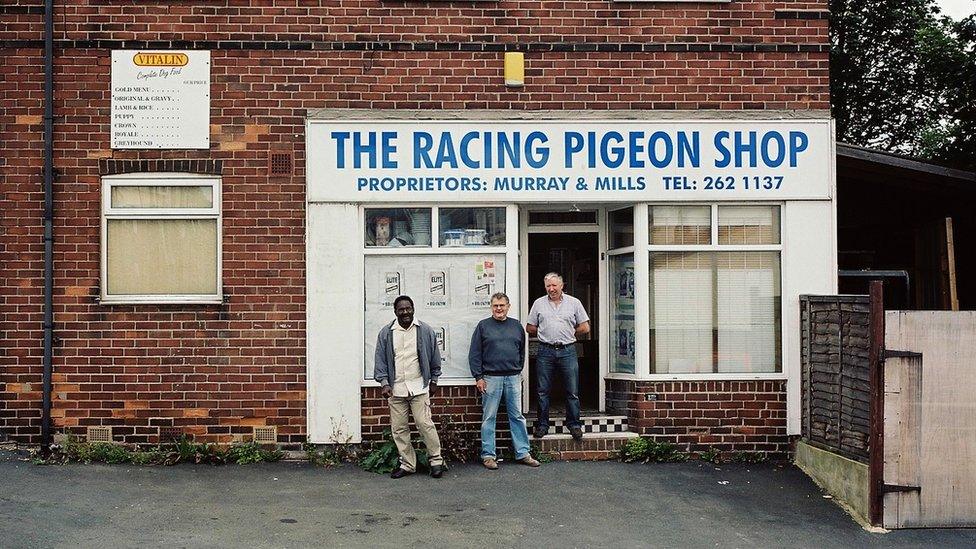
John Murray, right, owned the Racing Pigeon Shop and remembers "great times" on Blake Grove
John, who still runs a racing pigeon business, remembers "great times" on the street and often passes by his former shop, which closed in 2010.
"Shops weren't allowed to trade on Sundays, but we'd open our doors for a few hours to let the pigeon boys come in," said the 60-year-old.
"I remember we had to unload 20 tonnes of pigeon corn into the shop by hand - it was unbelievable.
"I have fantastic memories there, but also some sad - especially when we had to close due to the financial crisis. We really had a niche market so it was so sad to see it go, but like I said, great times."
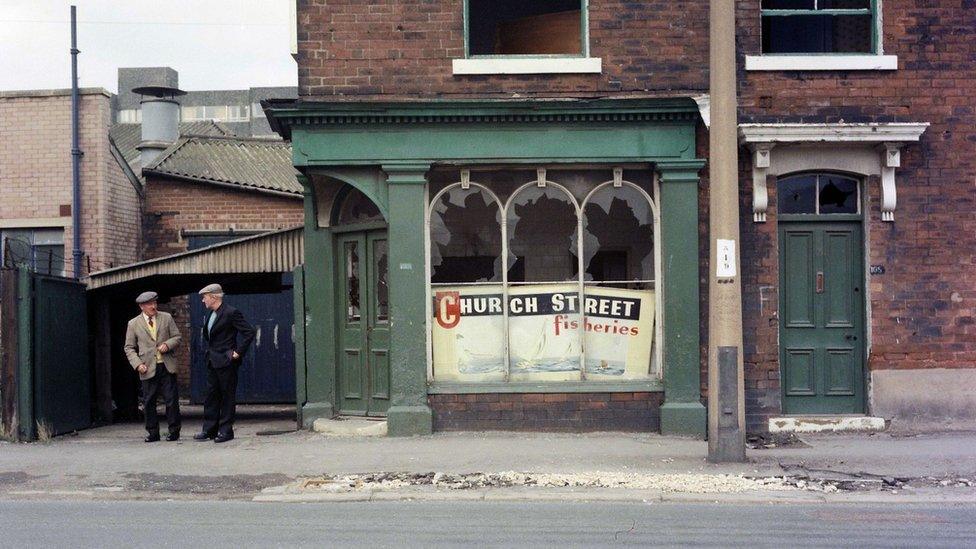
Sometimes the photographer would go back to show the owners the few pictures he had developed to find the buildings had gone
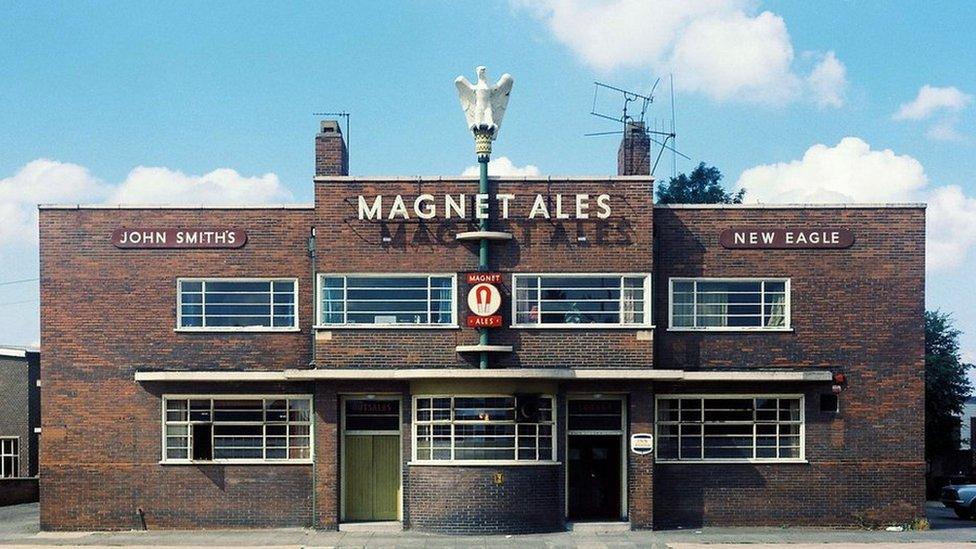
Peter used a stepladder to frame this shot of the New Eagle pub on Torre Road
Many of the previously unseen images are also being developed into a book as an ode to the city's lost landscape and Peter posts some of the photos on his Instagram account, Strangely Familiar.
He still takes shots around Leeds with the same medium format camera and was awarded an honorary degree for his work by Leeds Arts University in June.
Allow Instagram content?
This article contains content provided by Instagram. We ask for your permission before anything is loaded, as they may be using cookies and other technologies. You may want to read Meta’s Instagram cookie policy, external and privacy policy, external before accepting. To view this content choose ‘accept and continue’.
"It was a total surprise as I keep to myself in my Yorkshire cave - I'm a hermit of the north really," says the 76-year-old, who still lives in the same house in Chapeltown.
"I still don't believe how this has all come about, but I think my mum would have been quite pleased with me."
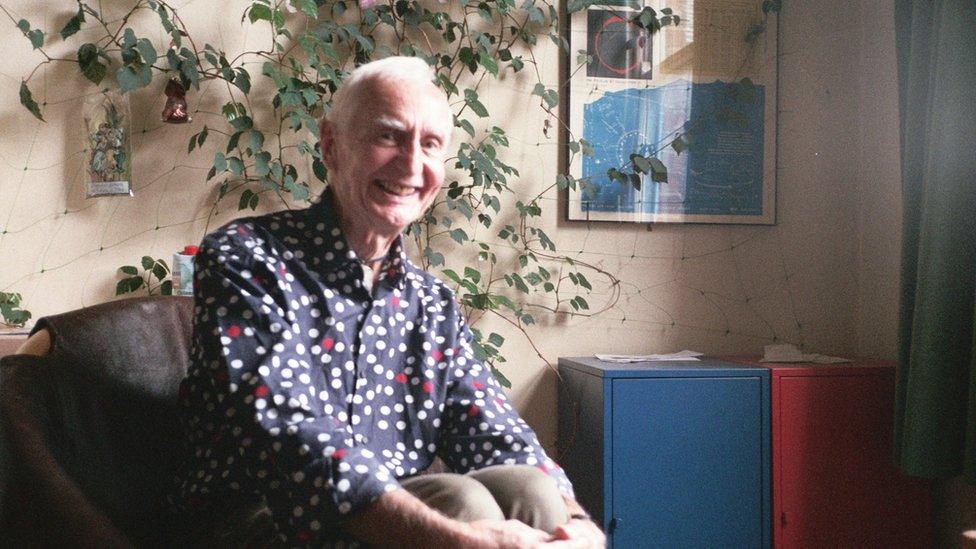
The Manchester-born photographer was awarded an honorary degree from Leeds Arts University
The Lost Leeds exhibition will run next year.
You might also be interested in
- Published25 August 2019
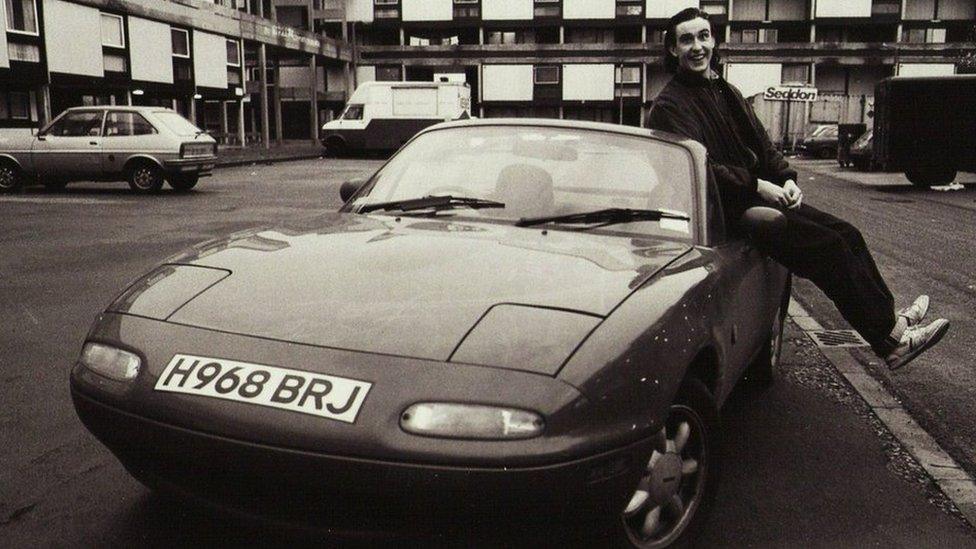
- Published24 May 2015
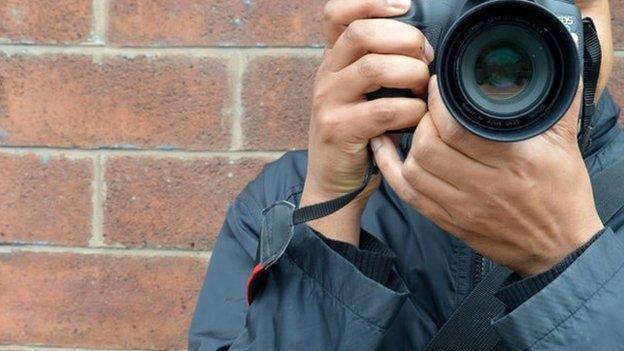
- Published2 March 2014
